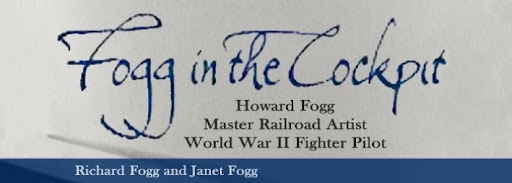We originally posted this on April 7, 2011, and in anticipation of the release of the movie
Red Tails, which recognizes the efforts and heroism of the Tuskegee airmen who served with the 332nd Fighter Group, we thought we would re-post these thoughts about the P-51 in movies...
You are treading on thin ice when you state that something is "the best". With that in mind, any reasonably informed person would have to acknowledge that the P-51 Mustang was, at the very least, one of the best fighters of WWII. No less an "authority" than Hermann Goring, the infamous head of the Luftwaffe, said he realized the war was lost when he saw P-51s over Berlin. In The Military Channel's series of "10 Best," the episode on fighter aircraft ranked the P-51 # 1, not just of WWII, but of all time.

P-51B CV-Q 44-15717 (368FS) in flight with a flight of four. Photo courtesy of Elsie Palicka, wife of Ed Palicka, 370th Fighter Squadron Photographer: Archived by Char Baldridge, Historian, 359th Fighter Group Association.
Given its illustrious history and reputation, you would think the P-51 might have been featured in multiple mainstream films. Nope. To the best of our knowledge, until 2012 and the release of
Red Tails, there was a grand total of one film that is centered around the P-51, and it takes place not in WWII but Korea. The 1957 release of
Battle Hymn (widescreen, color) used Air National Guard Mustangs with the American southwest substituting for Korea. There isn't any actual combat footage but the staged attack and flying sequences give the viewer a glorious look at the P-51.
A 1996 HBO movie,
The Tuskegee Airmen, tells the story of the famous black aviators that flew out of North Africa and Italy in the 332nd Fighter Group. A few civilian P-51s were rounded up and repainted, and the movie has some decent flying sequences.
That's it. There are P-51 "sightings" in a few movies such as
Empire Of The Sun,
Saving Private Ryan,
Memphis Belle, and the 1968 film
Dark Of The Sun, set in the Congo. A reader of our original post was kind enough to remind us of the P-51 sighting in the 2002 POW movie
Hart’s War, starring Bruce Willis.
Ironically, the plane the Mustang was most often called upon to escort - the B-17, has had its fair share of exposure. The 1943 film
Air Force, set in the Pacific, revolves around the B-17 "Mary Ann", and the 1990 release of
Memphis Belle follows the story (Hollywoodized) of the real "Memphis Belle". Another 1943 release,
Bombardier, centers on bombardier training in B-17s. It was filmed, in part, at Kirtland Army Air Field in New Mexico, where real training was taking place. 1962's
The War Lover stars Steve McQueen in the title role as a B-17 pilot. 1969’s
The Thousand Plane Raid features some spectacular low level passes of B-17s filmed for the movie as well as color combat footage. In 1948
Command Decision concentrated on the thought process behind the strategy of daylight bombing and target selection. Based on the play of the same name, there are a few B-17 scenes in the movie. The following year the Academy Award winning
Twelve O'clock High emphasized the toll the decision making took on those in command, but it also utilized Allied and German combat footage of B-17s in action. Both
Command Decision and
Twelve O'clock High were set in 1943, before the deployment of the Mustang, and focused on the terrible losses the bombers incurred without long range fighter escort.
George Lucas co-produced
Red Tails, so we know the flying sequences, though all CGI, will be spectacular. Due for release on January 20, 2012, it stars Cuba Gooding, Jr., who also starred in HBO's
Tuskegee Airmen. Since it will presumably be set in Italy, it means there still is not a single movie featuring P-51s flying out of England. Who knows, maybe
Fogg in the Cockpit...
As before, we'd love to hear from you about any other P-51 sightings in film or TV!
 From the Early Winter 2012 issue of WWII History:
From the Early Winter 2012 issue of WWII History:







